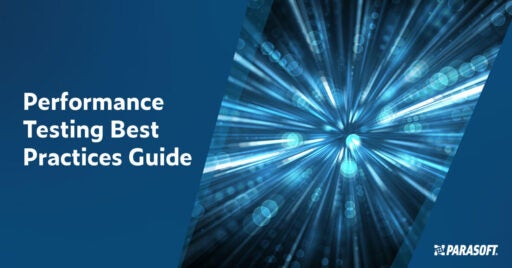Use Agentic AI to generate smarter API tests. In minutes. Learn how >>
Jump to Section
What Is Test Data Management?
Test data management (TDM) is the function that creates, manages, and delivers test data to application teams. Here you'll learn notable types of test data and TDM best practices.
Jump to Section
Jump to Section
Overview
Test data management (TDM) is an integral part of the modern DevOps lifecycle. But shifting left Agile methodologies is the new normal in today’s development environment. That means pivoting away from traditional tools toward solutions that protect sensitive data, optimize processes, and speed up and streamline bug detection.
Is your test data management strategy lagging behind? Perhaps your time to market is hampered by the requirement of very specialized skills that not all of your development team has honed. The time-consuming nature of TDM is what makes modernizing it so critical in today’s testing automation-oriented software development life cycle.
Let’s cover the ins and outs of TDM processes, best practices, challenges, the best tools for the job, and how automated testing can optimize your software testing for better products, happier development teams, improved testing life cycles, and lower costs.
This blog will answer the following questions and more.
- What is test data management?
- How do you manage test data?
- Why is test data management important?
- What is the test data management life cycle?
- What is TDM and TEM?
- What are TDM best practices?
- What are the best TDM tools?

All About Test Data Management Strategy
Shifting left puts ever more focus on decreasing time to market, cutting costs, data security, data privacy, and faster application uptime. So, let’s start with the basics: what is test data management?
TDM is how developers and testers craft, manage, and deploy test data for application teams. Quality test cases, test coverage, and test data management processes can contribute to Agile development. Moreover, automation tools can further help your team surmount test data requirements.
Deliver quality software faster with simulated services and test data management.
How Do You Manage Test Data?
Managing test data requires three core elements in your approach.
- Sufficient available test data for test automation
- Available bandwidth to avoid limiting which automated testing solutions development teams can employ
- Ability to acquire test data on demand when needed for test data automation
What Is the Test Data Management Life Cycle?
The life cycle of any test data management process involves 5 key steps:
- Plan. Teams put together test lists, identify data requirements, their approach to test data, and coordinate documentation.
- Analyze. Teams consolidate requirements and make decisions about how to store, backup, and access data creation.
- Design. In the final stage before non-production deployment, teams pin down data preparation strategies such as synthetic data generation, cloning, data subsetting, and so on.
- Develop. During the building phase, teams can implement their strategies, as well as perform data masking if necessary.
- Maintain. Teams must maintain the test data to allow for troubleshooting and fixes as they respond to requests and perform updates.
TDM vs. TEM
The term TEM stands for test environment management so it deals with the areas in which test data lives. The environment should be stable, validated, and able to be used for bug replication and test situations.
The Essential Guide to Environment-Based Testing

Common Types of Test Data
There are four main types of test data and developers must construct a set of strategies and tools that address all data types. The type of test data that teams encounter usually falls into one of the following categories.
- Synthetic data. Helpful for new feature tests, this type of data comes from manual tests. While it alleviates security concerns, it does fall victim to human error. It also requires more knowledge on behalf of the tester regarding the test environment, data relationships, and the data itself.
- Production data. For more complete test coverage, production data is the best option. However, it can result in breaches of sensitive information, higher storage costs, and reduced agility. And it will need to be protected from unintentional modifications during the testing process.
- Masked production data. Data masking requires a staging environment with sufficient storage to maintain referential integrity after any kind of data transformation. This lengthens environment provisioning but also enables development teams to leverage real data with no risk. Masking data comes from nulling, anagramming, encryption, or substitution.
- Subsets of production data. These segments allow for more agility, reduced hardware requirement, and lower costs. They do not provide as comprehensive test coverage in comparison to full copies and may still risk exposure of sensitive data.
Deliver quality software faster with simulated services and test data management.

Best Test Data Management Tools
Data testing requires the best test data management tools for the job. Finding the best one for your needs comes down to a few criteria such as:
- Usability
- Value proposition
- Intuitive UI
- Available integrations
- Data reusability
- Data masking
- Targeted testing and data sets sizes
Traditional Tools vs. Modern Solutions
Traditional TDM tools and testing approaches entail cloning a production base (including or excluding subsets). However, this risks data security and privacy, lacks parallelism and data collisions, doesn’t account for infrastructure costs like archiving data or complexity, and still requires a ton of specialized expertise or scripting with synthetic data generation.
Instead, leveraging data simulation with tools such as Parasoft Virtualize removes shared dependencies thus reducing complexity. It also enhances a team’s ability to address rare use cases and isolated test suites. You can read more about modern TDM approaches and data virtualization in this blog.

TDM Best Practices
Regardless of data sources, good test data must be available when needed, of good quality, compliant, and realistic. Validation of data quality and more goes beyond expected results in the best data strategy.
Write In-depth, Quality Test Cases and Code
While this might go without saying, the better quality ingredients you use, the better your meal will be at dinner time, right? The same applies to test cases, code, and testing. Furthermore, parallelizing testing improves speed. Getting better quality test results from better quality testing data is critical in Agile methodologies.
Planning, Maintenance, and Security
Maintaining the security of test data is just as paramount nowadays as obtaining actionable results, especially when it comes to government compliance. The GDPR dictates that you cannot use real data for testing which is why data masking has become a key strategy. Planning for your test environment, test standardization, and data security will improve project speed and quality.
But you can’t leverage this momentum without proper storage and maintenance. Test data audits must be done often to ensure accuracy, safety, and data integrity.
Data Relevancy and Refreshing
Leveraging the data you really need is pivotal when it comes to an Agile TDM. Think of it like this: if you just grab clothes from your closet and put them in your suitcase, you might not have the items you need for your trip to Chicago in December. In the same way, determining what kind of and how much data you need for your testing process matters when building test cases.
But performing a data refresh also affects its relevance. While you do need to reuse whenever you can, you don’t need to keep out-of-date or stale data that you can’t use anymore. Delete irrelevant data to make room for new data that can provide further insights.
Implement Automation
The testing process doesn’t have to be a long, arduous slog. Automating repetitive processes can alleviate pressure from development and free up time to focus on other projects. By making use of automated testing, you can provision data faster, reduce human error occurrences, integrate into continuous integration/continuous delivery pipelines (CI/CD), and more.
Automating regression testing is an easy first step in the automation process. But testing teams can also look to automate things like test data production as well. No matter what your data needs or testing purposes might be, automated solutions for functional tests, performance tests, and more are must-haves in your test processes.

Common TDM Challenges
Common test data management challenges tend to involve the same kinds of things such as:
- Reliance on out-of-date or irrelevant data.
- Only utilizing full production databases and their copies vs. utilizing relevant or critical segments.
- Risking security breaches by not hashing or masking sensitive information.
- Heavy dependence on data throughout testing.
Ways to Combat Common Pitfalls
- Utilize simulated production environments that isolate test data with controlled inputs that deliver expected outputs. This data can then be compared against actual outputs.
- Enhance the availability of test data with subsets of the full production data.
- Scale down how much your team relies on test data if required.
- Embrace independent unit tests that don’t rely on external data.
- Reduce your team’s dependence on database test data. If you don’t, you’ll encounter performance degradation like reduced speed, as well as more difficult test isolation.
Service Virtualization With TDM: The Perfect Match
Parasoft Virtualize focuses on the A, B, C, and D of test environment destabilizers. A is availability, B is behavior, C is cost, and D is data. Attaining consistency in these areas is critical in the shift-left approach. But many issues with TDM relate to how time-consuming and knowledge-heavy it can be.
See how to create assets, manage test data, and monitor test environments with Virtualize.
Automation can’t replace human expertise, but introducing a proxy between the backend and any application under test enables the proxy to act as a traffic cop. What’s more, our user-friendly UI makes test environment managing a less daunting task, as well. The Continuous Testing Platform (CTP) works with Test Data Manager to visualize the data in a more accessible manner. You can even search with keywords and view results in text-based or tabular formats. In essence, service virtualization can be an optimizer for the whole workflow.
TDM for the Win: How Test Data Management Enables Continuous Testing
Related Post + Resources




